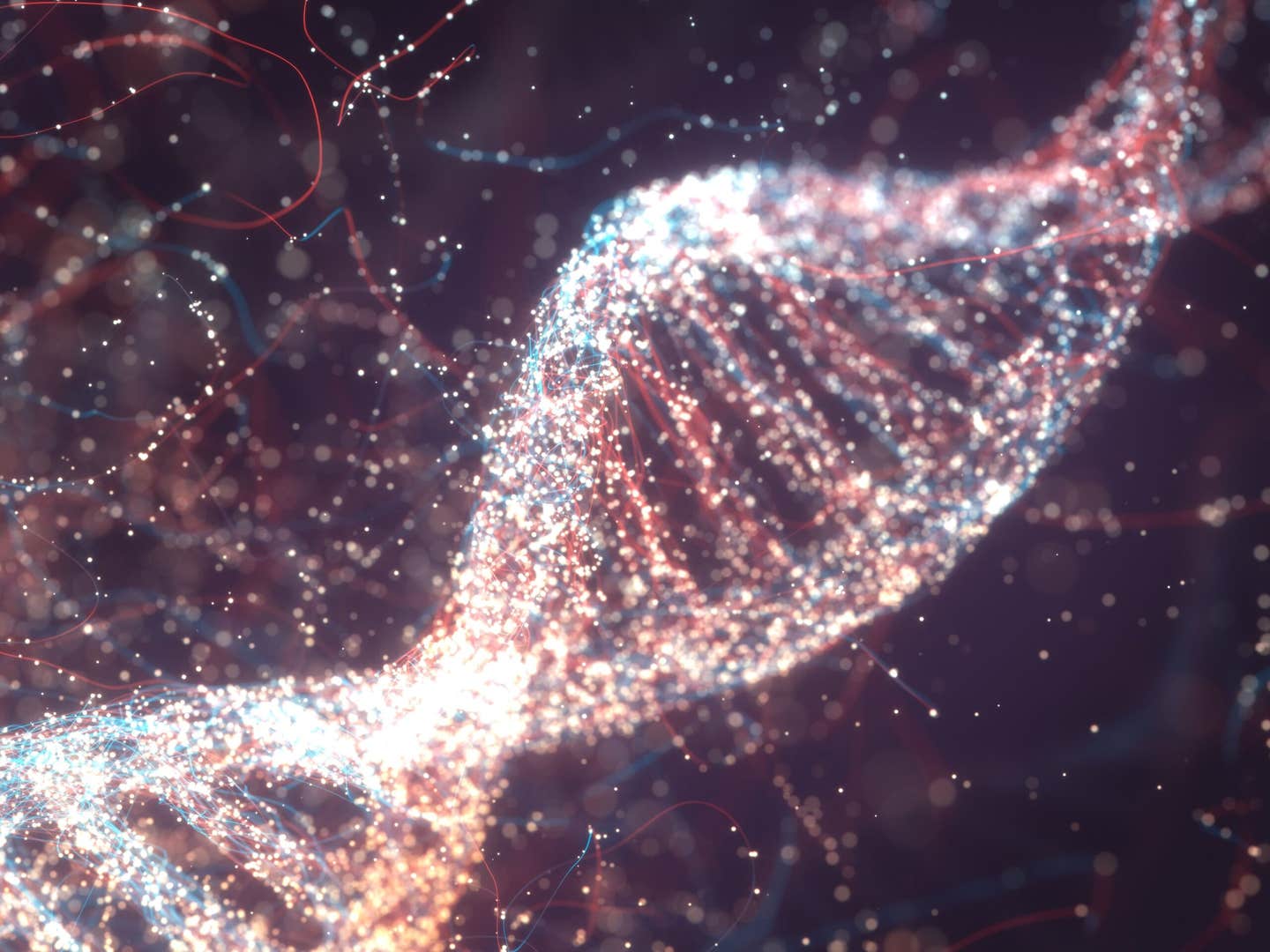Human limb regeneration just got one step closer, study finds
This astonishing achievement brings us one step closer to the possibility of repairing bones, cartilage, and even regenerating lost limbs.

[Dec. 14, 2023: JD Shavit, The Brighter Side of News]
This astonishing achievement brings us one step closer to the possibility of repairing bones, cartilage, and even regenerating lost limbs in humans. (CREDIT: FreePik)
In a groundbreaking experiment that could redefine the field of regenerative medicine, scientists from Northwestern Polytechnical University in Xi'an, China, have successfully grown antler-like structures on the foreheads of mice by transplanting stem cells from deer.
This astonishing achievement brings us one step closer to the possibility of repairing bones, cartilage, and even regenerating lost limbs in humans.
Deer antlers, an iconic symbol of the animal kingdom, are unique among mammalian body parts due to their ability to regenerate annually. Every year, during the spring, these majestic appendages increase in length at an astonishing rate of approximately one inch per day. This remarkable regenerative process has long piqued the interest of scientists seeking to unlock the secrets of tissue regeneration in mammals.
The research team embarked on their journey to decipher the mechanisms behind deer antler regeneration. The first step in their quest was to identify the specific cells responsible for this awe-inspiring regrowth.
Related Stories
Scientists have long known that, after shedding their old antlers, deer possess blastema cells that can transform into the tissues required to regrow their antlers.
To delve deeper into this phenomenon, researchers used RNA sequencing to examine a staggering 75,000 cells obtained from sika deer, scientifically known as Cervus nippon. These cells were sourced from the tissues within and near the antlers, allowing the scientists to closely observe the regenerative process as it unfolded.
The Key Players: Antler Blastema Progenitor Cells (ABPCs)
The results of the study unveiled a crucial discovery. Ten days before antler shedding, an abundance of stem cells was identified in the antler pedicle, the stumps that remain on the day of shedding. However, it was five days after the antlers were shed that a distinct subtype of stem cells emerged, aptly named "antler blastema progenitor cells" (ABPCs).
Just 45 days after transplanting regenerating blastema cells onto the foreheads of hairless, laboratory mice, they began growing small stumps (pictured). (CREDIT: T. Qin)
These ABPCs originated within the antler pedicle, the outgrowths located on the front of the deer's skull. Remarkably, these very cells held the key to the regenerative prowess of deer antlers. They were identified as the primary drivers behind the transformation of stem cells into cartilage and bone.
Transplanting ABPCs to Mice: A Remarkable Transformation
With the newfound knowledge of ABPCs' role in antler regeneration, the scientists embarked on an ambitious experiment. They cultured these ABPCs in a laboratory petri dish and subsequently implanted them between the ears of hairless laboratory mice. What followed was nothing short of extraordinary.
In 2020, a different team of scientists found that they could grow stumps on the heads of mice (pictured) by inserting a piece of deer antler tissue under their forehead skin. (CREDIT: C. Li)
Within a mere 45 days after transplantation, the implanted ABPCs had successfully developed into "antler-like structures" within the foreheads of the mice. These structures contained both cartilage and bone, mirroring the natural regeneration seen in deer antlers. This unprecedented achievement highlights the remarkable regenerative potential of these specialized stem cells.
The Potential for Human Applications
While these results are still in the early stages of research, they hold immense promise for the field of regenerative medicine. Lead author Tao Quin and the team behind this groundbreaking study believe that their findings could have profound implications for human health.
ABPCs formed in the antler pedicle - outgrowths on the front of the skull - five days after deer shed their antlers. These were transplanted into the foreheads of laboratory mice. (CREDIT: T. Qin)
Quin and his colleagues envision a future where deer-derived ABPCs could be employed in clinical bone repair procedures. Furthermore, they speculate that the induction of human cells into ABPC-like cells could revolutionize regenerative medicine, potentially offering solutions for skeletal injuries and even limb regeneration.
While further research and clinical trials are necessary to fully explore the potential of this groundbreaking discovery, the implications are undeniably profound. The dream of repairing bones, cartilage, and perhaps even regenerating lost limbs in humans is closer to becoming a reality, thanks to the transformative power of nature and the unwavering dedication of scientific pioneers.
As we continue to unravel the mysteries of regeneration, the future of medicine may hold unprecedented possibilities for healing and recovery.
Note: Materials provided above by The Brighter Side of News. Content may be edited for style and length.
Like these kind of feel good stories? Get the Brighter Side of News' newsletter.
Joshua Shavit
Science & Technology Writer | AI and Robotics Reporter
Joshua Shavit is a Los Angeles-based science and technology writer with a passion for exploring the breakthroughs shaping the future. As a contributor to The Brighter Side of News, he focuses on positive and transformative advancements in AI, technology, physics, engineering, robotics and space science. Joshua is currently working towards a Bachelor of Science in Business Administration at the University of California, Berkeley. He combines his academic background with a talent for storytelling, making complex scientific discoveries engaging and accessible. His work highlights the innovators behind the ideas, bringing readers closer to the people driving progress.



